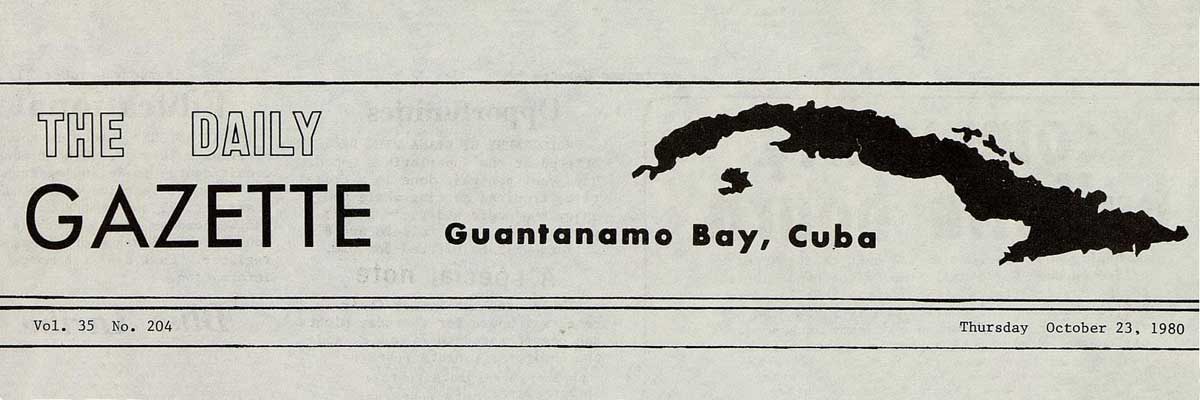Professor Sharika Crawford was excited to see the collection of several newspapers published at Guantanamo Naval Base in Cuba preserved by the Latin American Materials Project (LAMP) and available openly through the Digital Library of the Caribbean. These Guantanamo newspapers include Gitmo Review (1963-1964), Daily Gazette (1980-1987) and others, which offer articles on national and foreign news as well as local events and sports. “These newspapers shed light on the naval base community at Guantanamo, a community few of us have any familiarity with.” In addition, she was drawn to the Caribbean Sea Migration collection of newspapers produced by Cuban and Haitian detainees at Guantanamo Naval Base, digitized by Duke University. “These newsletters are great! They often contain images including political cartoons making fun of the Cuban and American politics.” Newspapers like Éxodo and N’ap Boule reflect political and social attitudes of Cuban and Haitian detainees as well as document their experiences on the base. When read together, they have the potential to offer a fuller understanding of the lived experiences of migrants and U.S Navy enlisted and commissioned officers. Both collections are openly accessible and available to all interested researchers.
As an Associate Professor of History at the United States Naval Academy, Dr. Crawford eagerly finds ways to integrate original source material into the classroom. Each spring, she offers a course on modern Latin American history where midshipmen welcome material highlighting the role of the U.S Navy in the region. Latin American migration to the United States has a long history, and the Guantanamo Naval Base newspapers and the Caribbean Sea Migration collection of newspapers allow students to explore the topic in a fresh manner. “I really enjoy the fact that the Caribbean Sea Migration collection allows students seeking to use or practice Spanish to utilize foreign language material of relevance to the course subject.” In the classroom, students can practice Spanish in a real life context and not simply confined the use of Spanish to a language course. Most importantly, it helps students understand how historians working outside the United States must address the issue of language and interpretation as a non-native speaker. The Caribbean Sea Migration newspaper collection contains English, Spanish, and Haitian Kreyòl publications.
Beyond the classroom, the newspapers have significant research value as well. Drawing on the printed ephemera, Dr. Crawford is currently working with a colleague at a Colombian institution on how to interpret the experiences of Haitian and Cuban detainees at Guantanamo Naval Base in the 1990s. The newspapers are a dynamic and underutilized collection, which Dr. Crawford intends to encourage students to utilize for future research papers and honors theses.
